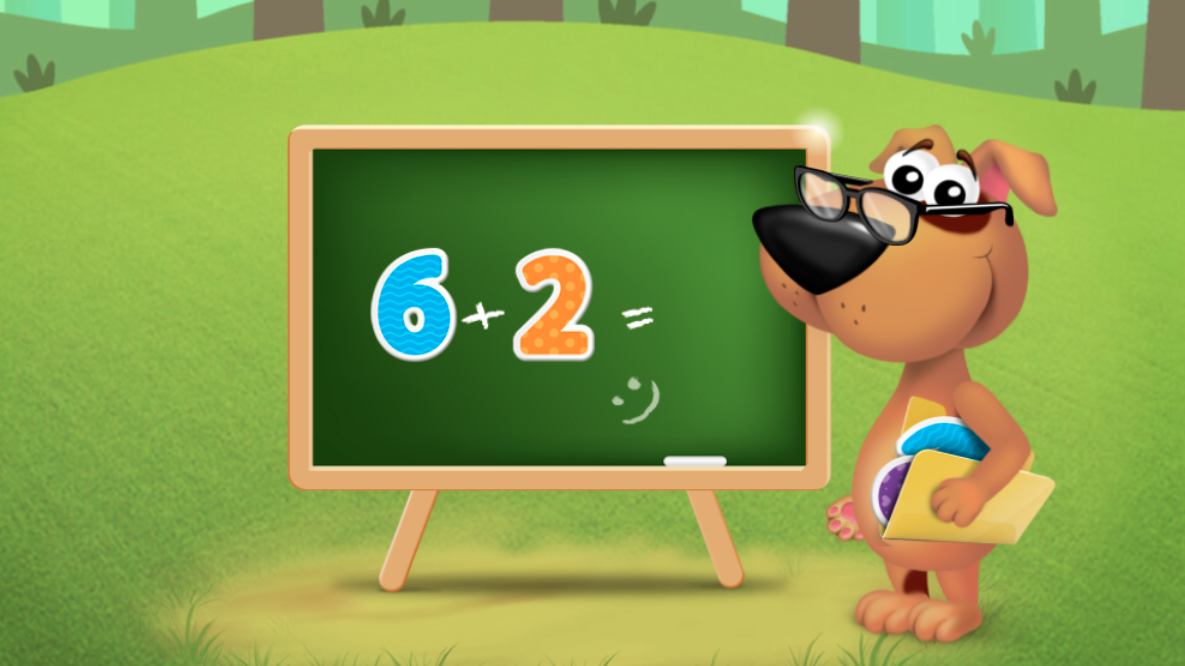Normal Time Worksheets for Ages 3-6
5 filtered results
-
From - To
Enhance your child's understanding of time with our Normal Time Worksheets for Ages 3-6. Designed to captivate young learners, these engaging worksheets offer a fun approach to mastering the basics of telling time. Through colorful illustrations and easy-to-follow exercises, children will quickly grasp concepts such as hour and minute hands, analog clocks, and time recognition. Perfect for preschool and kindergarten students, our printable worksheets ensure a solid foundation in math while fostering independent learning. Set your child on the path to success with our expertly crafted resources, available now for download at Kids Academy.
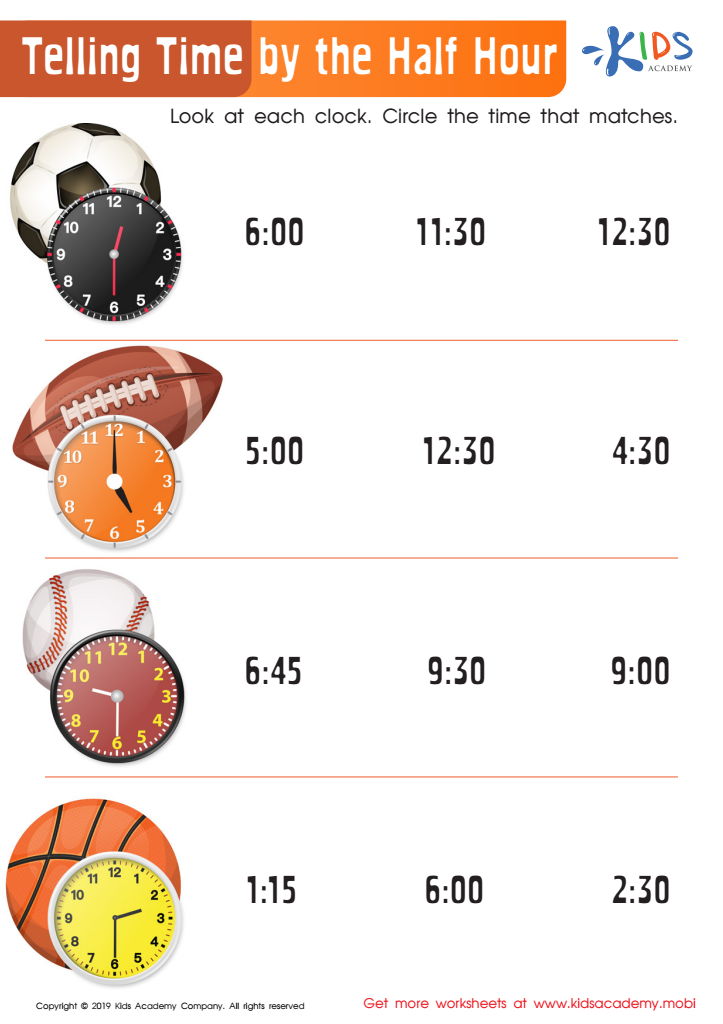

Telling Time by the Half Hour Worksheet


Years Worksheet
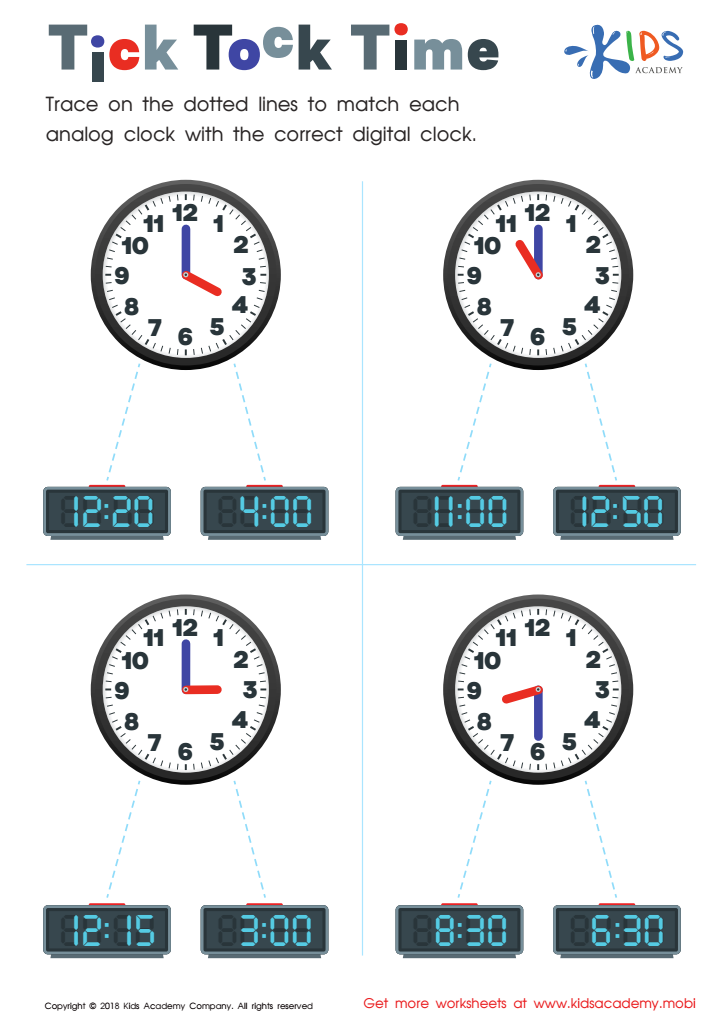

Tick Tock Time Worksheet
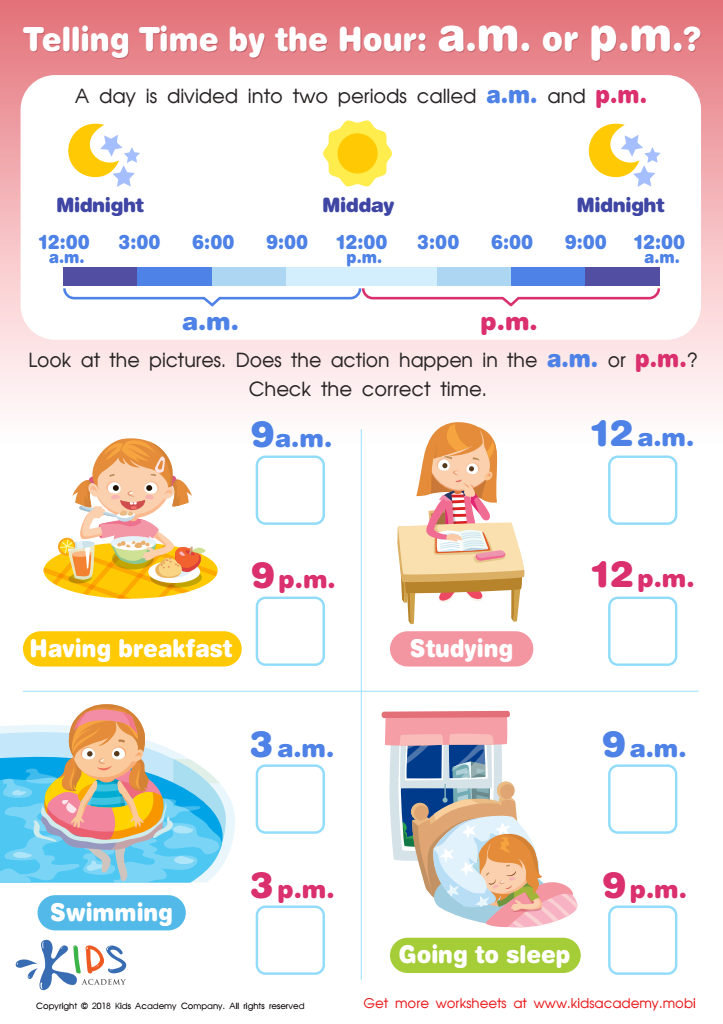

Tilling Time by the Hour: a.m. or p.m.? Worksheet
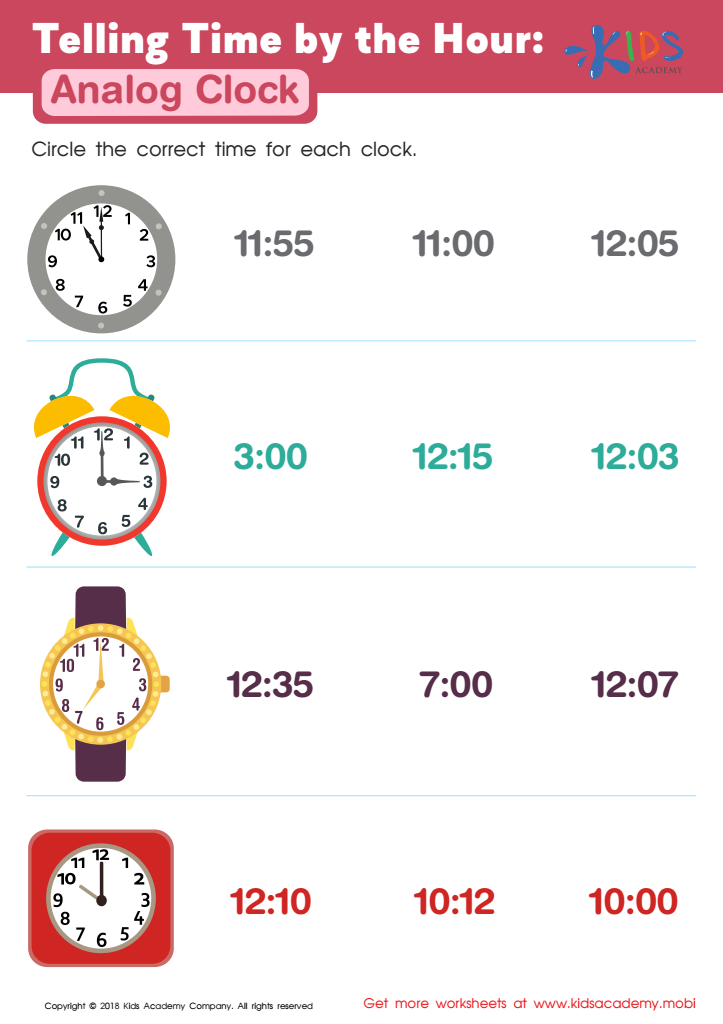

Telling Time by the Hour: Analog Clock Worksheet
Normal Time, which focuses on activities free from screens and structured schedules, is crucial for the development of children ages 3-6. During these formative years, children's brains and bodies are growing rapidly, and they need ample opportunities for unstructured play, physical activity, and real-world interactions. Unlike time spent in front of screens, Normal Time encourages creativity and imagination, helping develop cognitive, social, and emotional skills.
Parents and teachers should care about Normal Time because it lays the foundation for lifelong learning and well-being. Interactive play fosters communication skills and emotional intelligence as children learn to express themselves, share, and resolve conflicts. Physical activities during Normal Time enhance motor skills, coordination, and overall health, setting the stage for future success in school and other activities.
Moreover, children who engage in Normal Time experiences typically show improved attention spans, better problem-solving abilities, and increased curiosity about the world around them. Such experiences are irreplaceable by passive screen time, which can inhibit these critical aspects of development.
In essence, prioritizing Normal Time enriches children's lives by supporting holistic development and cultivating skills that digital activities alone cannot provide. It prepares young children not only for academic success but also for becoming balanced, emotionally intelligent individuals.

 Assign to the classroom
Assign to the classroom

